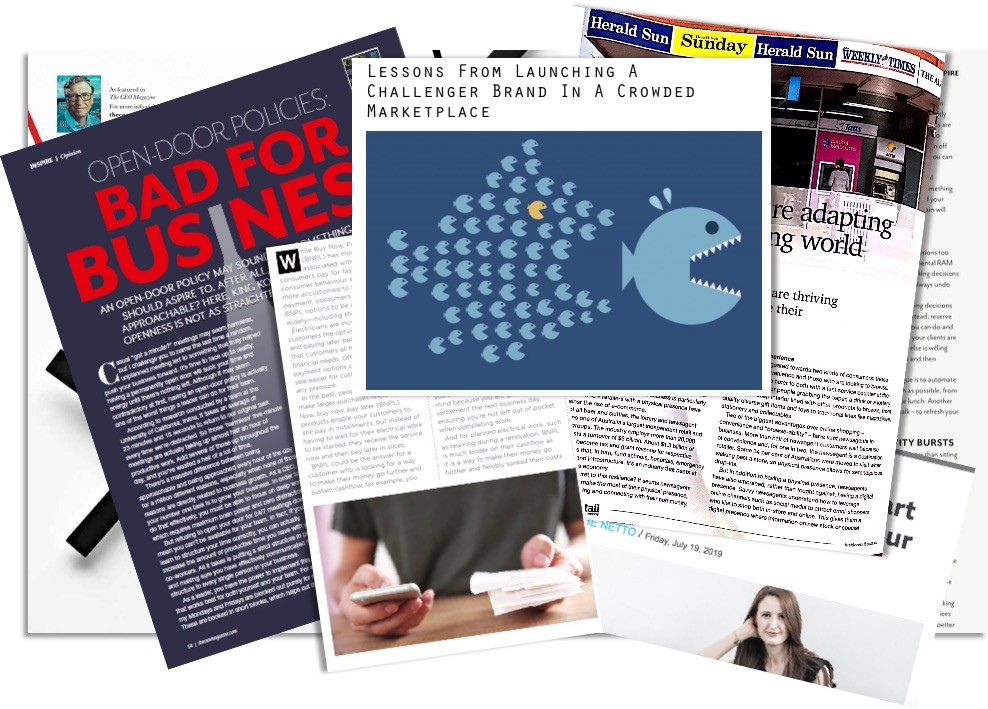Should you write press releases for your business? It’s a question that plagues many a small business owner, especially when you’re just starting out or planning on doing your own PR.
The PR industry itself is generally divided into two camps: those who believe the press release is dead, and those who still love it.
As with many things in life, the reality is more likely somewhere in the middle.
Media releases can be incredibly useful for small businesses, but if you don’t have a newsworthy story to tell, you might as well go back to the drawing board. Even if you do have a newsworthy story up your sleeves, there are still many hoops you’ll need to jump through to get your press release published.
Rubbish press releases are the bane of a journalist’s existence. Their inboxes are full of them, and they get more and more, every single day.
Research, research, research
Research is critical to good PR.
If you’re sending out a press release to a journalist, you should know what beat that journalist covers, what style of stories they tend to accept, and ideally what time of day is best to contact them.
You’ll need a deep understanding of the publication you’re pitching to, so it’s critical that you spend some time and energy fully immersing yourself in each publication’s content.
Sign up to their email lists, follow their social media accounts and speak to anyone who might have some insider insight.
Find out what time they send their newsletters or file their content, and what their daily deadlines are, so you can avoid hassling them at the wrong time.

Short might be snappy, but it’s not helpful
I always advise businesses to go against the popular opinion of keeping releases ‘short and snappy’.
My mission is to make a journalist’s job easier by giving them a story that they are happy to cover, and then giving them as much information as they need to do that well. It’s far easier for them to pick out the bits of a release they want than to chase you for more information.
As I write the release, I’m anticipating what they will want to know, so I can include as much of it as possible in the release itself. For example:
- ‘Yes, high-resolution images or b-roll footage is available.’
- ‘Yes, I have the following people available for interview, and case studies are available.’
- ‘Yes, I have included additional information such as a bio and a lengthier background below.’
- ‘Here is supporting data with references.’
This year has been incredibly hard on journalists, who are all working longer hours, tackling intense, life-changing stories and in many cases, are being paid less to do more work.
Do whatever you can to make their lives easier.
Going beyond the press release
Although press releases are a great tool under specific circumstances, most of the time, they’re simply not going to cut it.
Unless you’re selling a hard news story with a headline-worthy hook, it’s likely that your release will simply go straight in the (virtual) bin.
In 2020, journalists typically only have time for news that relates in some way to current events, or is a standalone story in its own right.
If you’re questioning whether your story is ‘newsworthy’ enough, it’s probably not.
Don’t worry though, because even if you don’t have any worthwhile news to share, there are still multiple ways to achieve positive media coverage for your business. These include advice or opinion articles, otherwise known as contributed editorial, or bylined articles.

These are articles providing helpful advice, how-to tips, bold commentary, and explanations on a particular topic.
In a bylined article, you are attributed as the author with your name attached. Often your company name, website, a short bio and a photo of you are also included in the author line, or at the bottom of the article.
These are great for business leaders in particular, because it positions you as an expert, guarantees what will be said, and includes information that encourages the reader to take action.
If you’re planning on writing an opinion-based byline, consider topics including busting a particularly prevalent myth in your industry, exposing money-wasting schemes, weighing in on issues of the day or creating some kind of debate.
Finally, look for feature and interview opportunities where possible.
However, don’t simply approach a journalist offering ‘an interview’. Instead, look for genuinely useful ways that you can fit into a current news story or ongoing debate.
Search out the journalists who are already writing about a topic you know inside out, and look for gaps in their reporting or ways you can add even more value to their work.
SourceBottle is a fantastic low-cost service that identifies interview requests and media call-outs, looking for talent or information. This gives you the opportunity to participate in upcoming media reports and features.
Make great connections

A PR agency with good relationships with key media can also pitch you as a spokesperson for interviews, or as a case study to be involved in scheduled feature articles and news pieces.
Ultimately, if you have a good story to tell, a journalist does not care if you tell it over email, over the phone, or via carrier pigeon.
If a press release is the best way to tell your tale, then don’t let trends or half-baked PR theories stop you.
After all, it’s the content of the release, not the release itself, that matters.

This blog post was written by Phoebe Netto, founder of Pure Public Relations, and was originally created for Smartcompany.com.au

